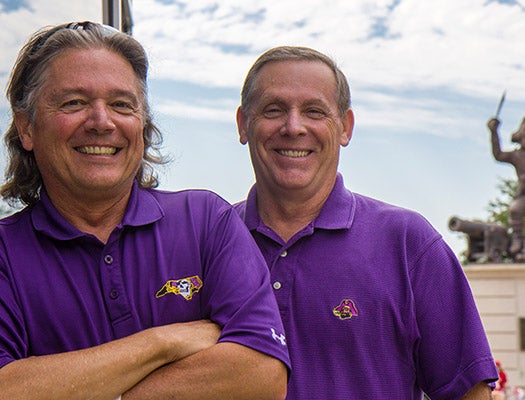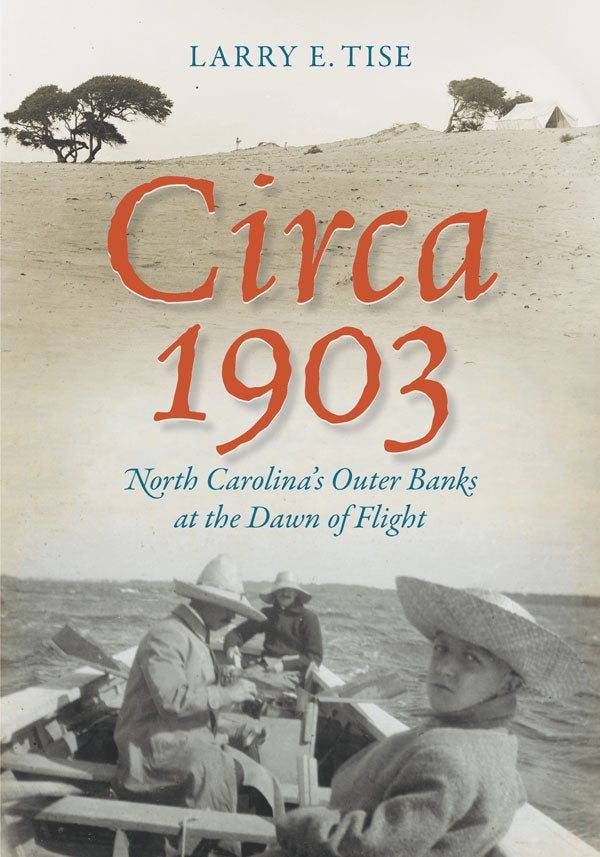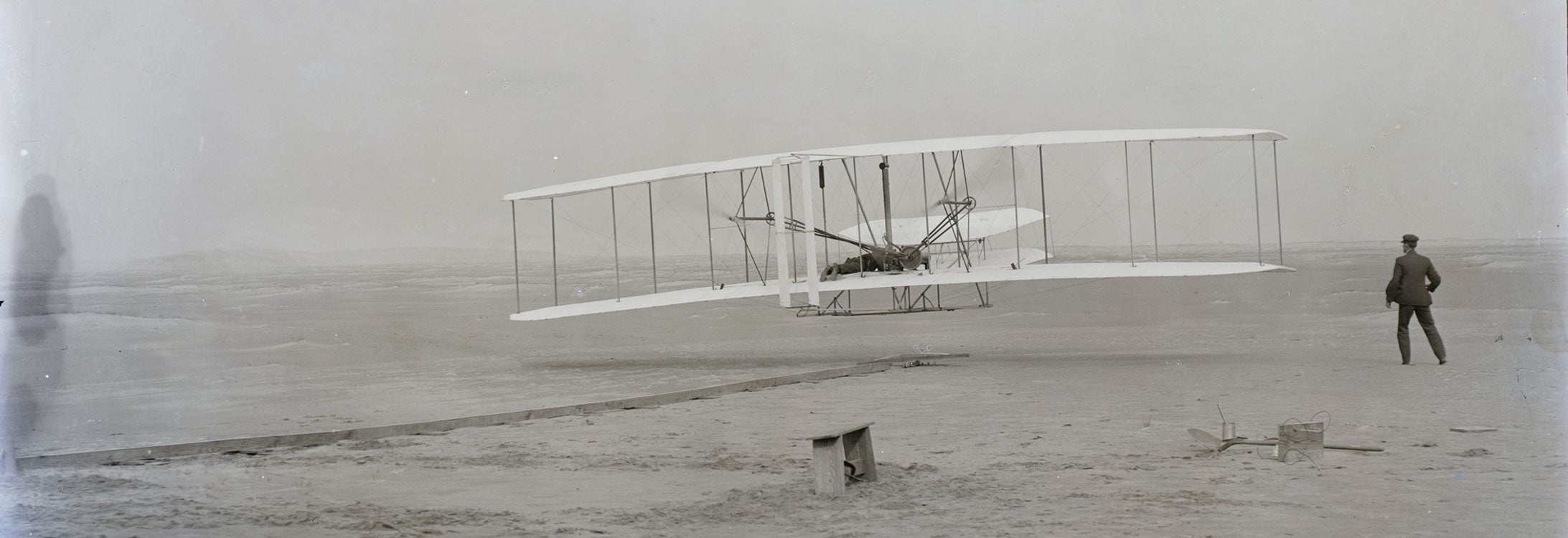FIRST FLIGHT
ECU professor, pilot reflect on Wright Brothers’ 115th anniversary
One hundred and fifteen years ago, on Dec. 17, 1903, just south of Kitty Hawk, Wilbur and Orville Wright flew the first successful airplane.
Their Wright Flyer was the first powered, heavier-than-air machine to achieve controlled, sustained flight with a pilot aboard. The flight made history and made celebrities out of the two bicycle-mechanics-turned-aviation-pioneers. The implications of their invention changed the world and inspired many people, including an East Carolina University graduate and pilot who flew over the same spot with his own brother, and an ECU history professor who has written three books on the Wrights.

Worth Carter ’78 and his brother Don Carter ’83 honored the Wright brothers’ first flight with a flight of their own. (Photo by Mike Litwin)
Worth Carter ’78 and his brother Don Carter ’83 both graduated from ECU, where they obtained their commissions through the Air Force Reserve Officers’ Training Corps program. In 1987, while serving in the Air Force, the brothers honored the Wrights’ first flight with a flight of their own over the Wright Brothers’ National Memorial at Kill Devil Hills. They made history as the first brothers to fly a KC-10 Extender, which was a new aircraft at the time.
Worth said that in the moment, the historical nature of his and Don’s flight was not on his mind as he was “busy making sure I was coming from the right direction and low as I could get legally to give a good show to the folks on the ground.”
On reflection, however, he said, “It was a wonderful, neat experience. I’m very appreciative of the opportunity that our commander gave us.” (Family members usually cannot serve as crew members together on a flight.)
ECU history professor Larry Tise’s fascination with the Wright brothers started with a family vacation and a visit to the memorial as a child. He was quickly hooked on the topic and as an adult he studied the Wright brothers extensively and wrote three books about them. His latest, “Circa 1903: The Outer Banks of North Carolina at the Dawn of Flight,” will be published this spring.

“Circa 1903: The Outer Banks of North Carolina at the Dawn of Flight,” by ECU professor Larry Tise will be published this spring. (Contributed photo)
“The Wright brothers found the perfect laboratory for flight on the coast of North Carolina,” Tise said. “There were hundreds of people trying to fly at the time. What set the Wright brothers apart was that they didn’t mind failing; they knew they were going to crash over and over and over. But they didn’t want to fail in front of an audience.”
The brothers sought the privacy of Kitty Hawk’s expansive sand beaches. They tested hundreds of wing designs and studied the aerodynamics of gliders first. When they finally found success with the airplane – a glorious 12-second flight with Orville at the controls – they didn’t publish a single photo of the accomplishment until three years later.
Photos and additional ephemera are available in Joyner Library’s digital archives. The documents are part of a past exhibit Tise helped organize for the Wright brothers centennial. The most interesting part of the collection might be the never-before-made-public diary entries of the Wright brothers’ daily activities and the weather conditions they faced at Kitty Hawk. There are also commemorative editions of newspapers that remembered the achievements of the brothers and celebrated the history and character of the region.
The Wright brothers put a human in the air and paved the way for commercial aviation. Sixty six years after their flight, Neil Armstrong would carry pieces of their plane in his pocket when he walked on the moon. The pieces recently sold at auction for hundreds of thousands of dollars.
“It’s amazing how far we’ve come,” Carter said. “The technology has rapidly increased and it’s getting even more so. You can only imagine how we’ll be flying in the next 10, 15, 20 years.”
